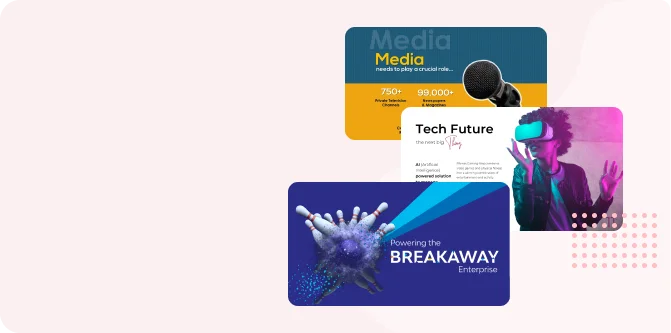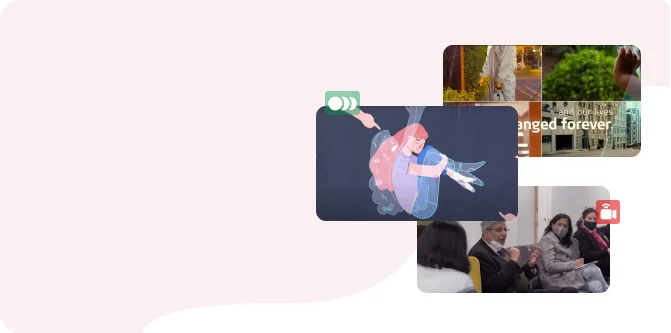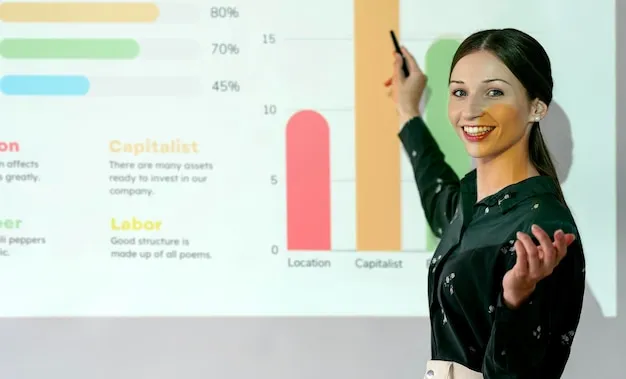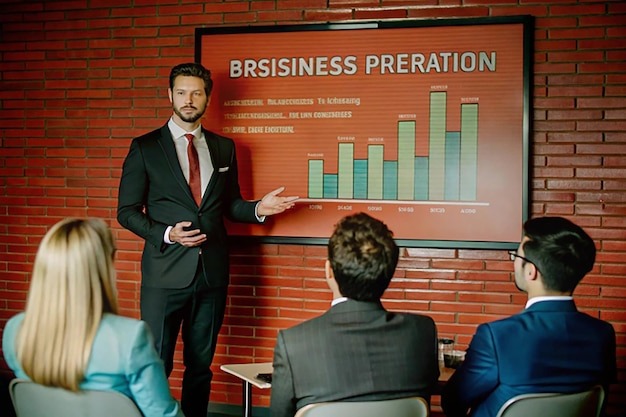While designing presentations, we understand the importance of creating visually appealing designs, but it’s equally important to engage our audience through compelling storytelling. Especially in the realm of B2B (Business-to-Business) presentations, where the ability to tell a compelling story can make all the difference between sealing the deal and leaving potential clients or partners disinterested. While data and facts are essential, it’s the narrative that brings them to life, makes them memorable, and fosters an emotional connection. In this blog post, we will dive into the captivating world of storytelling in B2B presentations and explore how storytelling can transform your B2B presentations, enabling you to effectively engage, persuade, and ultimately succeed!
Why storytelling matters in B2B presentations?
Let’s face it, B2B presentations can sometimes be dry and monotonous, but now we have the power to change that. By incorporating storytelling in B2B sales presentations, we can create an emotional connection with our audience, capturing and holding their attention throughout the entire presentation.
One key aspect of creating engaging presentations is to focus on the needs and pain points of your audience. While designing your presentation, it’s crucial to understand the challenges that your audience faces and present your solution through a compelling narrative. By doing so, you can demonstrate empathy and establish a stronger connection with your audience.
Besides engagement and establishing an emotional connection, stories can also clarify and help simplify complex concepts, making them easier for your audience to understand. It creates a mental framework that allows your audience to grasp your message quickly. Ultimately, an engaging story can also set you apart from the competition and help your audience see your brand as unique and memorable.
Storytelling strategies for impactful B2B presentations
What makes a B2B presentation successful? Is it the number of slides or the amount of data presented? While these factors are important, the real power lies in the story you tell. A well-crafted story has the ability to create a lasting impression, making your message more memorable and impactful.
When preparing your B2B presentation, consider the following storytelling elements:
Character: Introduce a relatable character or persona that your audience can identify with. This helps create an emotional connection and draws them into the story.
Conflict: Present a problem or challenge that your audience can understand and relate to. This generates intrigue and keeps them engaged throughout the presentation.
Resolution: Offer a solution or a way to overcome the conflict. This is where you present your product or service as the answer to their problems.
Call-to-Action: Finally, provide a clear call-to-action that guides your audience towards the desired outcome. This could be scheduling a demo, contacting your sales team, or signing up for a trial.
Now that we understand the power of storytelling and the elements involved in it, let’s explore some specific storytelling techniques for B2B sales presentations:
1. Know your audience
While this may seem like a no-brainer, it is indeed very important to know your audience. Who are they? What would interest them about your product? Is it the business side of it, the marketing side, the financials, or something else? Understanding the specific needs, pain points, and expectations of your audience will help you tailor your story accordingly. Without knowing your audience, it’s like you are aiming towards the dartboard blindfolded.
2. Start with a compelling opening
Capture your audience’s attention right from the beginning with a strong opening to set the tone for the rest of the presentations. This could be an interesting anecdote, a thought-provoking question, or a surprising statistic. The key is to spark curiosity and make your audience eager to hear more. As they say, the first impression is the best impression. So, the first strong opening is a great way to ensure you have garnered their interest at the get go, and this sets you up for success as you proceed with your presentation.
3. Use real-life case studies
Nothing is more convincing than real-life success stories. Incorporate case studies into your presentation to show how your product or service has helped other businesses overcome challenges and achieve their goals. Use storytelling techniques to bring these case studies to life, making them relatable and impactful. In the case of pitching your new B2B service, you can even mention the challenges that you faced with the product going onto the market and the steps you are planning to take to overcome them. This will make your story more credible as it addresses some key pain points you’re facing.
4. Make data meaningful through storytelling
Data and statistics are often essential in B2B presentations, but they can be overwhelming and difficult to grasp. Use storytelling to make your data meaningful and relatable. Instead of bombarding your audience with numbers and charts, tell a story around the data that highlights its significance and impact. There are several data visualization techniques you can use to visually tell a story surrounding your data. With creative graphs and charts to represent your data, you will be able to help your audience see the impact at a glance, making them highly appreciative of your efforts.
5. Create a narrative flow
Structure your presentation like a story, with a clear beginning, middle, and end. Take your audience on a journey, building suspense and anticipation along the way. This will keep them engaged and make your presentation more memorable.
6. Utilize visual storytelling
An important B2B presentation storytelling tip is to know the power of visual storytelling. Use compelling visuals, such as images, infographics, and videos, to enhance your narrative and convey your message effectively. Remember, a picture is worth a thousand words! This would also make your presentations more impactful with greater recall value, as it is easier to recollect an image than a slide full of text. Therefore, make sure to wield the power of visual storytelling wherever necessary, without distracting the audience.
Some storytelling presentation ideas to boost your B2B presentation and get your creative juices flowing:
- Start with a personal story that highlights the problem you are addressing.
- Create a fictional scenario or use a popular movie or book as an analogy for your product or service.
- Use metaphorical storytelling to simplify complex concepts and make them more relatable.
- Include customer testimonials to showcase real-world examples of how your solution has made a difference.
- Share behind-the-scenes anecdotes about your product development or company’s journey.
- End your presentation with an inspiring story that leaves a lasting impact on your audience.
Some storytelling presentation ideas to boost your B2B presentation and get your creative juices flowing:
To help you boost your B2B presentation with storytelling skills, here are some essential tips:
Keep it concise: While storytelling is powerful, it’s important to keep your presentation concise and focused. Avoid rambling or going off on tangents.
Practice: Delivering a compelling story requires practice. Rehearse your presentation multiple times to ensure a smooth and engaging delivery.
Use visuals strategically: Visuals are a powerful storytelling tool, but make sure they enhance your narrative rather than distract from it.
Inject emotions: Connect with your audience on an emotional level by incorporating emotions into your story. This helps create a deeper impact and fosters a stronger connection.
Conclusion
Storytelling is a valuable skill to master. Therefore, to seize the power of storytelling, understand your audience, structure your story effectively, and use data and visuals strategically to craft a narrative that resonates, engages, persuades them to take action and ultimately leads to successful B2B relationships. So, the next time you prepare a B2B presentation, think beyond the slides and remember that facts and figures are important, but it’s the story that leaves a lasting impression. For your next presentation check out www.pitchworx.com to let the power of storytelling guide you to success!






